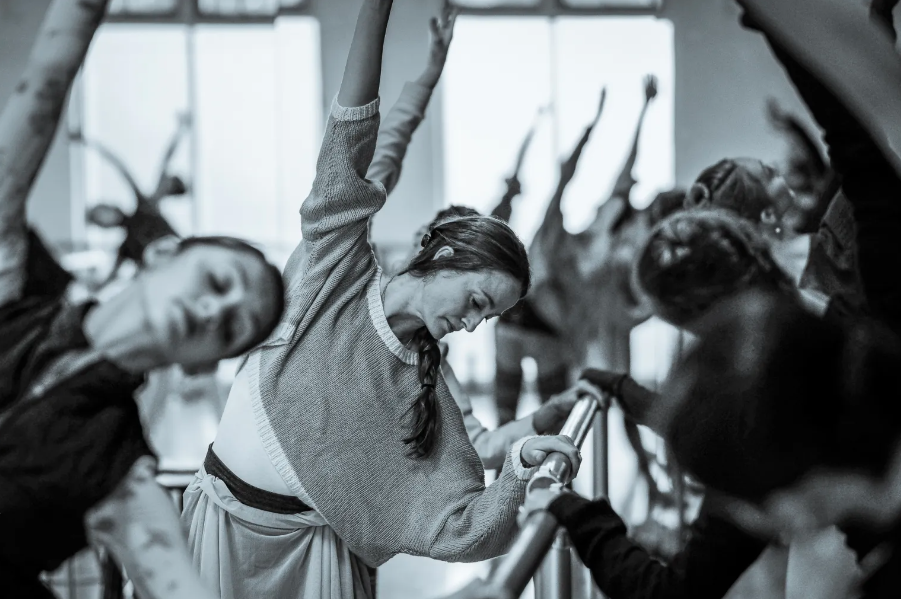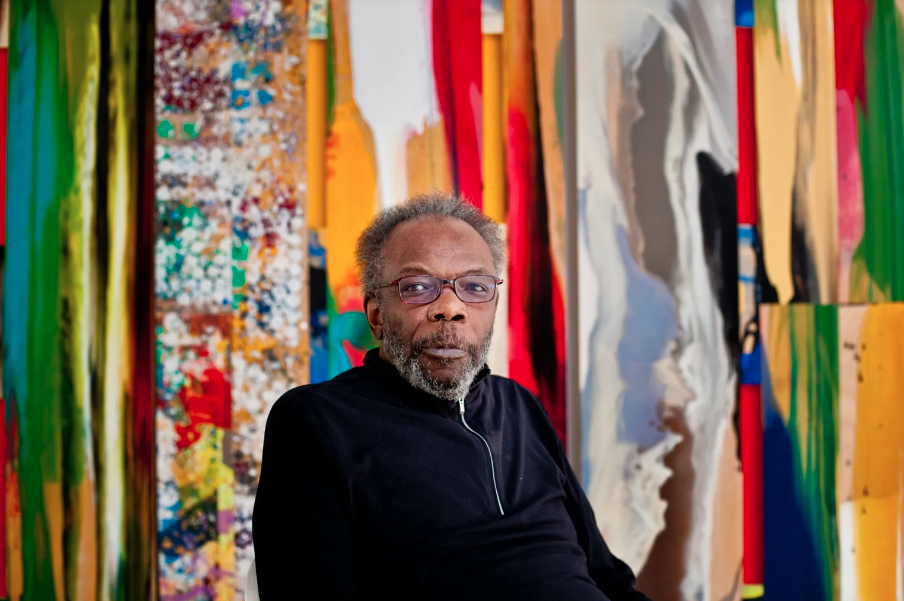After seven seasons, the company’s artistic director heads to Houston, leaving many wondering what’s next for the local ballet company.
This article was written for and published by Washington City Paper.
On Oct. 21, the Washington Ballet announced that Julie Kent, its star artistic director, would leave the organization at the end of the current season to become the co-artistic director at Houston Ballet, a new role seemingly made for her. Her unexpected departure from TWB has obvious repercussions for the company and raises questions about its future.
“I had an opportunity that grew very organically and really made sense on a lot of levels. And it seems like a logical next step for me to work in probably one of the greatest ballet companies in this country, if not the world,” Kent tells City Paper regarding her decision to step away from TWB. “I’m just honored to have the opportunity to join that community.”
Kent is only the third artistic director of the Washington Ballet in its 55-year history. Her tenure, from 2016 to 2023, will be the shortest. Septime Webre was artistic director from 1999 to 2016, following the company’s founder, Mary Day, who was artistic director from 1967 to 1999. Kent confirmed that the opportunity and decision to accept Houston’s offer were sudden. “It came together very quickly,” she says, noting it happened this fall.
Kent’s recruitment to lead the Washington Ballet was heralded as a move that would help the company emerge onto the national stage. Kent was the longest-serving ballerina in the history of American Ballet Theatre, one of the world’s leading classical ballet companies. She performed principal roles in more than 100 classical and contemporary ballets while at ABT, and originated roles in works by Mark Morris, Twyla Tharp, and Stanton Welch (Houston Ballet’s artistic director, who will continue in the role alongside Kent).
Kent is known in pop culture circles for her performance in the 2000 film Center Stage. But to those in the dance world, she is recognized as a ballerina of extraordinary accomplishment, discussed alongside dancers such as Suzanne Farrell, Natalia Makarova and Sylvie Guillem. When Kent arrived in Washington, she brought a radiant star power that was undeniable. Her trajectory in some ways parallels Judith Jamison, the longtime artistic director of New York’s Alvin Ailey American Dance Theater, who was a highly celebrated performer before transitioning into leadership.
“Julie is known for the pursuit of excellence—not as a goal, but as an ongoing process,” Jean-Marie Fernandez, board chair of the Washington Ballet, tells City Paper. “Our entire organization has benefitted, and will continue to benefit, from this quintessentially ‘Julie’ mindset.”
While praise for Kent is uniform in the dance community, it’s not clear that the company has always risen to her expectations, or that audiences have been able to grasp her vision. Prior to assuming leadership of TWB, Kent had no experience as a company director: She retired as a performer with ABT in 2015, one year before taking the job here. Her husband, Victor Barbee, associate artistic director of ABT from 2001 to 2016, however, was hired for the same role under Kent at TWB. (Barbee will also be departing TWB at the end of this season.)
“The directors brought in some new dancers, but in fact, they polished the whole company,” says Sarah Kaufman, who has reviewed TWB’s productions for years as chief dance critic for the Washington Post. “Julie and her husband Victor staged truly handsome productions of Giselle, Sleeping Beauty, Swan Lake, and the dancers stepped up to the challenges of that.”
Alastair Macaulay, chief dance critic of the New York Times from 2007 to 2018, agrees the direction provided by Kent resulted in improvement in performances of classical ballets. “Under Kent, I was immediately impressed by changes for the better in the company’s classical style,” he tells City Paper. “The company was evidently acquiring a single, coherent vision of classical style.”
“After I retired … Kent, whom I had never met before, consulted me about Swan Lake, by email, as she was preparing her new production,” Macaulay says. “I gradually realized she was much better educated than most dancers (and than many critics) in the immense complexities of Swan Lake’s textual issues.”
Kent, in our interview, expressed gratitude for the acclaim her stagings of classical ballets have received and pointed to the company’s place in the community as part of her legacy. While there are a number of large theater companies in the region with their own buildings and staff, there is only one such professional dance company. TWB impacts and influences not only professional dance in D.C., but dance education as well.
“There’s so much that I’m proud of,” says Kent. “I am so proud of all the accomplishments that we have made on stage, as far as all the artistic and technical and just the comprehensive growth of the dancers.” Additionally, she pointed to the restructuring of the company’s education facility in Congress Heights, which she says is, “producing dancers that are going on to wonderful careers either professionally or in high-level college programs.”
While classical ballets at TWB shined under Kent, some of the new works she commissioned were less well-received. Lisa Traiger, an independent dance critic and journalist who has been covering the field in the region for four decades, recalls a ballet commissioned from Kent’s former ABT colleague Ethan Stiefel to commemorate President John F. Kennedy’s space program with “ridiculous space suit costumes, an ugly set, and inconsequential choreography.”
While Kent programmed some noteworthy new works, including pieces by Annabelle Lopez Ochoa, Traiger evaluates, “most of them were middling, unlikely to be seen in subsequent seasons, or move to other companies.” Kent’s predecessors, Webre and Day, while less accomplished than Kent in some ways, were lauded for their ability to recruit standout choreographers for the company, including Trey McIntyre and Choo San Gho, respectively.
Like many artistic leaders over the past few years, Kent’s time leading the company’s programming was significantly impacted by the pandemic. Of her seven seasons at TWB, one was canceled in its entirety by COVID-19 and another was entirely virtual. (Not to mention, her first season was spent producing performances programmed prior to her arrival.)
Leading a dance company through a pandemic is much like coaching a team that’s never allowed to play. In a regular year, budgeting, season planning, and dancer development call for a skilled balancing act; being responsible for such areas of management during an unprecedented global pandemic is an additional level of difficulty. And there is uniform appreciation for the ways in which Kent navigated all of the challenges presented by COVID.
Now, with the company finally emerging into a more pre-pandemic rhythm, Kent’s decision to leave is another unexpected blow. Together Fernandez and Kent convened a special board meeting to share the news earlier this fall. Fernandez confirms the company is currently hiring a firm to assist the board committee in identifying candidates. An exact timeline for the hiring of the firm, let alone a new AD, was not confirmed.
The conclusion of each season is when dancers’ contracts are reviewed, renewed, and promotions considered. With Kent’s impending departure, it’s unclear who will handle those discussions, evaluations, and negotiations. However, Patrick Kennedy, the company’s managing director since August 2020, says, “Julie is with the Washington Ballet and fulfilling all artistic director responsibilities through the end of the 2022-23 season.”
The company has said little else about the transition. Now it prepares for its most important performance run of the year: 41 performances of The Nutcracker running Nov. 12 through Dec. 30. The holiday ballet is not just important for 2022, but TWB’s future. Theater and dance audiences have been slow to return and the box office success of this year’s Nutcracker run may be critical to the financial stability of the company. In her book Nutcracker Nation, Jennifer Fisher writes that ticket sale revenue from The Nutcracker is commonly more than 50 percent of annual ticket sale revenues for U.S. ballet companies. TWB hopes this year’s production will bring a return to pre-pandemic sales, but it will have to do so while competing with a Nutcracker production from Kansas City Ballet at the Kennedy Center.
Kent’s departure from TWB creates an opportunity for the company to redefine its place in the community. “There is a certain amount of momentum that a company needs to be a part of a community,” Kent says. “I’m really optimistic and hopeful that the next director will be able to just continue to build on all that we’ve accomplished to date and continue to engender even greater enthusiasm and interest.”
Until the next director arrives, and following this season’s Nutcracker performances, audiences can enjoy a weekend of works by George Balanchine from Feb. 22 to 26, a family-friendly performance run of adapted classics from April 7 to 9, and a run of The Sleeping Beauty from May 4 to 7. Perhaps, by that last performance, a new artistic director will be waiting in the wings.


